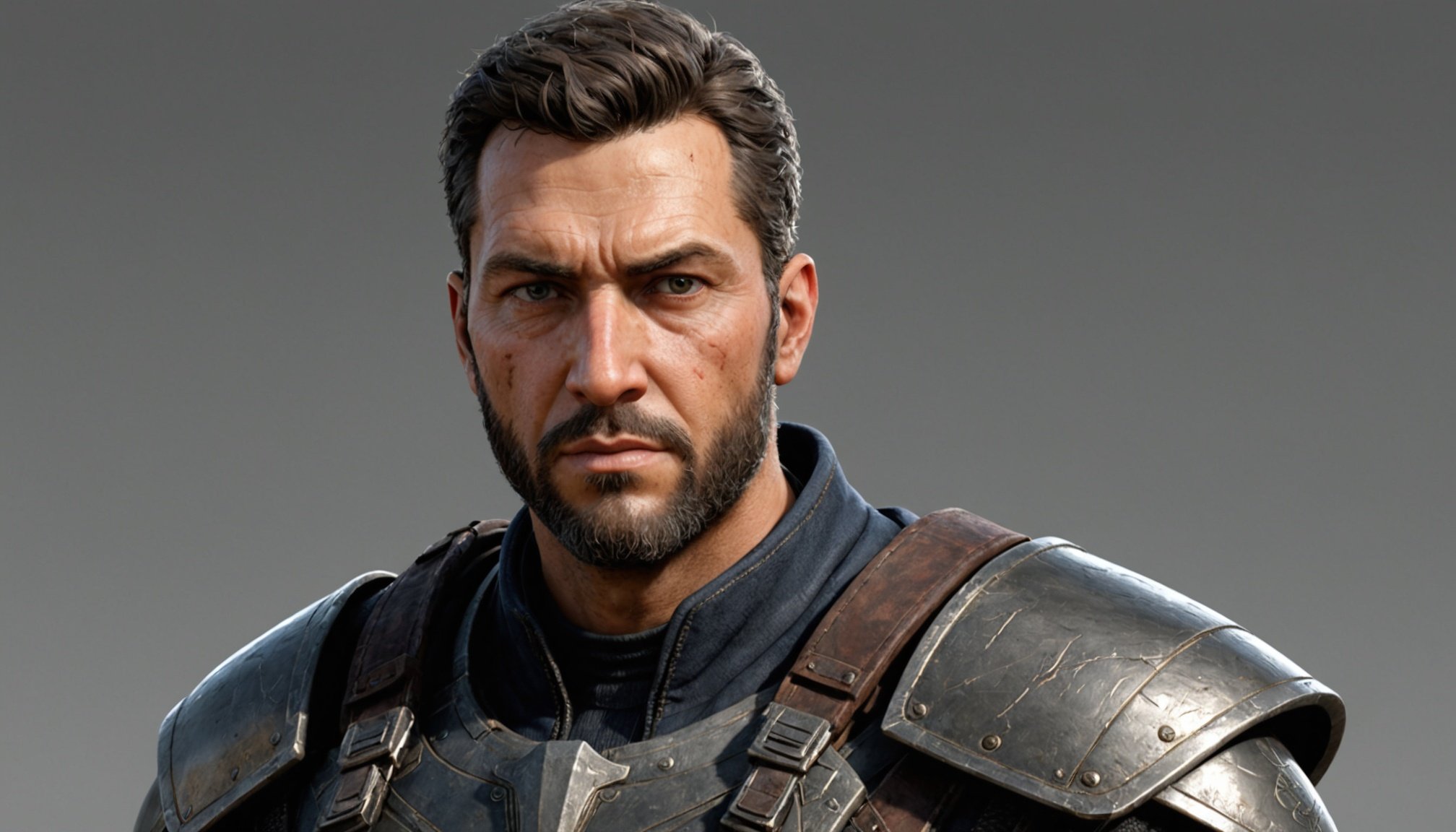Understanding Hyper-Realistic Character Texturing
Hyper-realistic textures are at the pinnacle of digital art techniques, transforming character design by achieving stunningly realistic appearances. These textures replicate fine details such as wrinkles, skin pores, and subtle surface variations, thereby heightening the visual fidelity of characters. In contrast, stylized textures often favour exaggeration or simplicity, creating a more abstract and interpretive visual experience.
The use of hyper-realistic textures significantly impacts gameplay and player immersion. When players encounter characters that look lifelike, it enhances the gaming experience by making the virtual world feel more believable and engaging. This can lead to a more profound emotional connection with the characters and the storyline, as players find themselves more invested in the game environment.
Have you seen this : Enhancing character emotion with machine learning: a new era of realism in narrative-driven gaming
Key differences between stylized and hyper-realistic textures lie in their execution and aesthetic goals. Stylized textures often use bold colours and distinct shapes to convey personality or mood, catering to artistic preferences or thematic needs. In comparison, hyper-realistic textures aim for authenticity and precision, requiring complex digital art techniques and substantial computing power to render these details accurately. As technology progresses, the tools and methods available for creating these textures continue to evolve, pushing the boundaries of what is visually possible in character design.
Essential Techniques for Creating Hyper-Realistic Textures
Creating hyper-realistic textures demands a keen understanding of several advanced texturing techniques.
Also read : Transforming action games: how real-time physics simulations enhance combat realism
Detailed Texture Mapping Techniques
Detail mapping is a pivotal step in enhancing surface realism, allowing creators to add intricate details that mimic reality closely. Leveraging normal maps and bump maps is essential for this process as they simulate surface details without adding extra geometry, enhancing depth and complexity. Best practices include overlaying these maps onto your base textures to add a facade of complexity. Mastery in layering techniques can further enrich textures, adding dimensionality through stacking different map types and fine-tuning their interactivity.
UV Mapping Strategies
UV mapping is crucial as it defines how textures wrap around 3D models. An efficient UV layout minimizes texture distortion, ensuring seamless application of the designed maps. Tips for efficient UV layout include arranging UV islands to maximize texture space usage and aligning them according to logical seams. This reduces stretching and distortion on the model’s surface, preserving the texture’s integrity. Several tools, such as Blender and Maya, offer robust software recommendations for UV mapping, providing features that simplify the painstaking intricacies involved in UV management. These tools are invaluable in assisting artists to swiftly create more accurate and authentic 3D textures.
Recommended Software Tools for Texturing
In the world of 3D modeling, choosing the right tool for texture painting can dramatically enhance your project. When it comes to texture painting software, Substance Painter is often hailed as a leader due to its rich features and intuitive interface. It allows artists to apply textures directly onto the 3D model, offering a real-time look at how the textures will appear in the final rendering. On the other hand, 3DS Max provides a comprehensive suite for both modeling and texturing, making it a versatile choice for those seeking an all-in-one solution.
For beginners, tools like Blender offer a free, robust platform that’s suitable for learning the ropes of 3D modeling and texture painting. Professionals might lean towards Maya for its powerful capabilities and industry-standard status.
Digital sculpting plays a crucial role in enhancing texture quality, particularly in creating hyper-realistic models. Softwares like ZBrush allow artists to create detailed, high-resolution textures that can later be applied to models in other software, giving life-like depth and intricacy.
Each tool has its unique set of features, thus understanding your project needs and skill level is key in selecting the right 3D modeling tools and texture painting software.
Optimizing Textures for Game Engines
In the realm of digital game design, performance optimization is crucial for both developers and players alike. A key component is texture compression, which ensures that high-resolution textures do not burden the game engine and hinder the gaming experience. By carefully optimizing textures, developers can vastly improve game performance without compromising visual quality.
Texture compression techniques, such as DXT and ASTC, are pivotal in this process. These methods effectively reduce the memory footprint of textures, allowing high-resolution graphics to run smoothly on various devices. Developers can implement these compressions by selectively reducing texture data in less noticeable areas, maintaining a balance between quality and performance.
Balancing high-resolution textures with performance constraints requires a strategic approach. One method is creating multiple versions of the same texture at different resolutions, then dynamically adjusting them based on the device’s capabilities and the user’s settings. This ensures that even users with less powerful hardware can enjoy a seamless gaming experience.
Key strategies include:
- Utilizing mipmaps to provide variable texture resolutions.
- Employing smart caching techniques to avoid redundant texture loading.
By integrating these methods, game design can achieve both aesthetic brilliance and performance optimization, captivating players with rich visuals and fluid gameplay.
Case Studies of Successful Hyper-Realistic Characters
Examining case studies of renowned game characters provides insight into the intricacies of character design success. These characters stand out for their hyper-realistic textures, raising industry standards. A prime industry example is the character Arthur Morgan from “Red Dead Redemption 2”, celebrated for his life-like detail. Utilising advanced texture mapping and real-time rendering techniques, the game developers have successfully bridged the gap between fiction and reality.
Analysis of Iconic Game Characters
Notable characters like Kratos from “God of War” demonstrate character design success through meticulous attention to skin textures and facial expressions. The use of photogrammetry — capturing high-resolution photographs of actors — enhances the realism of these characters. Developers employ this method not merely for aesthetics but to evoke emotional engagement.
Emerging Trends in Hyper-Realism
The current trend shifts towards incorporating AI and machine learning in texturing, enabling more complex and lifelike animations. These technologies afford artists greater creative freedom by automating repetitive tasks and refining texture detail. Machine learning enhances efficiency in texture creation, predicting and adapting textures in real-time. As this field evolves, we expect hyper-realism in video game design to achieve previously unimaginable levels of detail and immersion.
Conclusion and Key Takeaways
Understanding and mastering textures in character design are integral to creating hyper-realistic models. By embracing key character design principles, such as balancing detail with harmony, designers can transform their characters from ordinary to visually captivating. Precision in texture application ensures the defining elements of character design shine through, adding depth and vitality.
The road to excellence in texturing and character design is enriched by a dedication to continual learning. The ever-evolving nature of design technology means that even adept designers benefit from engaging with new software, techniques, and trends. Staying informed not only sharpens skills but also fosters innovation.
For those aspiring to excel, applying best practices is crucial. When starting a project, base your approach on industry standards while leaving room for creative exploration. Testing your techniques in real-world scenarios hones your capability and builds a robust portfolio.
In summary, continually enhancing your expertise in mastering textures, adhering to character design principles, and implementing best practices is vital. The acquired knowledge equips designers to create compelling, lifelike characters. Embrace experimentation and feedback as part of your creative journey, and watch your designs reach new heights.











